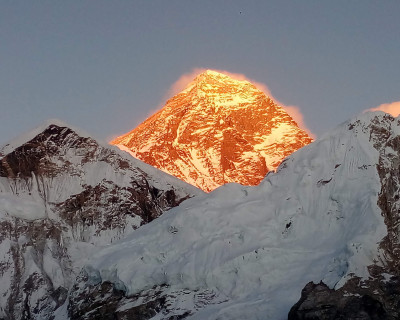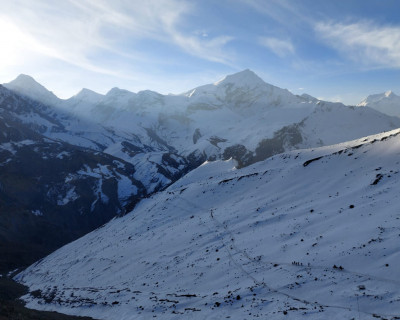Climate change is a global issue that has had adverse impacts on nearly all countries around the world. Small island nations are at risk of becoming extinct due to rising sea levels, while mountainous countries like Nepal are experiencing rapid melting of snow and glaciers, leading to various problems. One of the most significant impacts of climate change in Nepal is on the tourism sector, which is the main source of income for nearly 70% of mountain people who work in mountaineering, teahouse and lodge operations, guiding, and portering services. Due to the effects of climate change, these workers are facing numerous difficulties in carrying out their jobs. In this article, we will explore the impact of climate change on Nepalese tourism and its effects on various aspects of life.
Impacts of climate change on Nepal
The most visible impact of climate change in Nepal is the rapid melting of its glaciers. Nepal is home to some of the world’s highest peaks, including Mount Everest, and its glaciers play a crucial role in regulating water resources in the region. However, due to rising temperatures, these glaciers are melting at an alarming rate, which has serious consequences for the availability of water in the region.
Another impact of climate change in Nepal is the increased frequency and intensity of extreme weather events, such as floods, landslides, and droughts. These events are causing significant damage to infrastructure, homes, and agriculture, as also the loss of life.
Beyond this, climate change is affecting Nepal’s biodiversity too. Changes in temperature and precipitation patterns are altering the habitats of many plant and animal species, and some species are already experiencing declines in population size. This is a concern for the country’s ecosystem services and the long-term sustainability of Nepal’s Natural resources.
Impact of climate change on Nepal’s tourism sector
The tourism industry plays a significant role in the contribution to the country’s economy. Thousands of people get employment through it and generate significant revenue for the country. However, climate change is posing a major threat to the sustainability of Nepal’s tourism industry.
One of the most significant impacts of climate change on Nepal’s tourism sector is the melting of the country’s glaciers and the snow capping the giant mountains. Snow-capped mountains and glaciers are important attractions for tourists, particularly for trekkers and mountaineers. The beautification of mountains and high-altitude regions is due to the snow and glaciers of that region so when these things get affected due to climate change and global warming, it is certain that the tourism sector gets hit hardest first.
Another significant impact of global warming and climate change is the increased frequency of extreme weather events. Every year the level of rivers exceeds its limit the previous monsoon and during winter the level significantly decreases with no rainfall entire season. This is just an example; there are many other similar events like landslides and droughts occurring randomly. Considering these things trekkers and visitors should plan their holidays otherwise they have to face uneven situations while in Nepal.
Furthermore, climate change is affecting Nepal’s water resources, which are crucial for many activities to tourism. Changes in precipitation patterns are affecting the availability of irrigation, drinking, and recreational activities such as rafting and kayaking. This also impacts the quality and leads to a recession in the number of tourists visiting the country.
What can be done to mitigate the impact of climate change and global warming on Nepal’s tourism sector?
Encouraging sustainable tourism practices can help to reduce the impact of tourism on the environment and biodiversity. This may include measures such as reducing waste, promoting eco-friendly transport options, and supporting local communities in their conservation efforts.
Investing in climate resilience measures, such as early warning systems and infrastructure upgrades, can help to mitigate the impact of extreme weather events and protect tourism infrastructure from damage.
Supporting conservation efforts, such as the protection of wildlife habitats and promotion of sustainable agriculture practices, can help to ensure that the natural resources of the country are preserved for future generations of tourists to enjoy.
Also, awareness should be spread among the locals and visitors about these issues and take steps to minimize our environmental impact.
Collectively taking these actions, we can preserve the natural beauty maintaining its originality for future generations.


